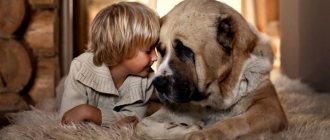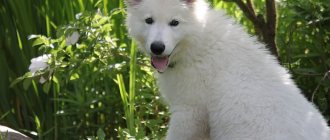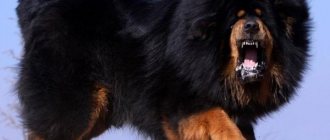Some animals hit the jackpot when it comes to ear size. If you are talking about a large animal such as the African Elephant or the much smaller Bush Baby then this is understandable. But there are many animals with the largest ear to body ratio, making them the creatures with the largest ears in the world.
Of course, an elephant's ears are significantly larger than those of other animals, but compared to their body size, some small animals' ears are much larger than you might think.
While they may also appear cuter than other animals with smaller ears, many animals with larger ears have them for very good reasons. They are often used for cooling or even pest control. Other animals with long ears are able to position them to hear sounds from certain directions or even pick up sounds at frequencies that humans can't even hear. Whatever their reasons for developing large, adorable ears, these animals are record breakers.
Serval
Photo: San Diego Shooter/
/CC-BY-NC-ND 2.0
The serval is a species of wild cat found in sub-Saharan Africa, although some have been seen in North Africa and the Sahel.
The Serval is a medium-sized cat, reaching between 10 and 20 kilograms. They usually have black markings on their bodies, but their most noticeable feature has to be their oversized ears. Interestingly, their ears are not much larger than those of typical domestic cats, but compared to their head size, they stand out noticeably.
Serval ears are not for fun, but are used primarily for hunting their typical prey, which includes rodents, birds, insects, frogs and small reptiles. They use their keen sense of hearing to locate their prey. They then stalk their prey like most cats and pounce on them from over six feet away so they can bite and snap the neck of their prey. Its ears are not the only enlarged feature found in the Serval, as they are also characterized by the longest leg-to-body ratio of any cat species. Scientific name : Leptailurus serval Type: Leptailurus
TOP 13 cat breeds with big ears
Let's get acquainted with the main representatives of cat breeds with long ears.
Oriental cats
Orientals are cats with a slender, strong body, a wedge-shaped muzzle and very large rounded ears. There are different colors: from light red to black. There are also two-color representatives of the oriental breed.
Orientals
These cats have an easy character: they are sociable and friendly. Orientals are active and love to play, and their passion for games is observed both at a young age and at a more mature age. These cats are very attached to their owner and are great friends.
Savannah
This breed was the result of crossing domestic cats and wild servals. Savannahs are very large: the weight of such cats is up to 12-15 kg. They have an unusual, unique appearance: a long neck, bright spotted fur, large eyes and large rounded ears.
First generation hybrids most often have a rather wild disposition. It is recommended to keep them in enclosures. At the same time, the closer the cat’s relationship to the African Serval, the more expensive it is. Cats obtained directly from a cross between a serval and a regular cat may be born with perfectly round ears, just like their wild ancestors.
Savannah
Hybrids of the second and several subsequent generations are also distinguished by their spectacular appearance, but at the same time their character is somewhat softer.
Attention! Savannah cats are mobile and active, they like to explore the territory, so you should not keep them in small apartments. You also need to be prepared for the fact that these cats will not be quiet and affectionate, because they are the closest relatives of wild animals.
Abyssinian cats
This cat breed is one of the most ancient. The ancestors of this particular breed were depicted by the ancient Egyptians in drawings and sculptures.
Abyssinian cats are medium-sized, slender, and agile. They have a rounded muzzle, large eyes and large ears, sometimes with tufts.
The coat is soft and short, and the color varies from dark brown to silver.
Abyssinian cats are intelligent and sociable. They love active games and get along well with other cats.
Abyssinian
Somali cats (Abyssinian longhair)
Somali cats are descended from Abyssinian cats. The appearance of representatives of these breeds is very similar, the difference is in the length of the coat - Somalis are long-haired. Somali cats also have large, wide ears and tufts are common. Another distinctive feature is a fluffy tail, reminiscent of a fox.
Somali
Somalis, like the Abyssinians, are smart and sociable. At the same time, unlike their ancestors, these cats are silent. They are obedient and kind, which is why they are considered ideal pets for families with children.
Siamese cats
The Siamese cat breed is one of the most famous in the world. These are small graceful cats with a characteristic color. The breed standards are a wedge-shaped head, large almond-shaped eyes and very large, wide-set ears with a fairly wide base and pointed tips. Siamese have short fur and no undercoat. The tail is thin and long.
Siamese cats have a capricious and jealous character. At the same time, they are very smart and can be trained well. Therefore, if a kitten is immediately taught the rules of behavior in the house, then there will be no problems with obedience.
Siamese
Maine Coons
Cats of this breed are very large, their weight reaches 10-12 kg. They have a massive head and very large ears, set close to each other (the distance between the ears does not exceed the width of one ear). Tassels are clearly visible on the pointed tips of the ears, making representatives of this breed look like a lynx. The Maine Coon is a long-haired breed, with especially long hair on the collar and tail.
Maine Coon
Despite their size and slightly menacing appearance, Maine Coons have an easy-going, friendly character, are very intelligent and can be trained well.
Sphinxes
Sphynx cats are known for having no hair. Their skin is covered with many folds, may have very short soft hair, similar to suede, or may have no hair at all. The sizes of these cats are standard. Large or very large ears are the calling card of sphinxes. The base of the ears is wide and set straight. To meet breed standards, a cat must have no hair on the inside of its ears.
Another distinctive feature of the sphinx is the so-called rat tail.
Attention! Sphynxes are a breed bred by fixing a mutation. In nature, the appearance of this species is impossible, since they are not adapted to survive in various weather conditions. In this regard, the owner needs to take special care of his pet: provide a warm house in winter, and protect him from sunlight in summer, because due to the delicate skin, the sphinx can quickly burn in the sun and even get sunburn.
Sphinx
Elves
These cats are similar to sphinxes in everything except their ears, which are unique to them. The large, wide-set ears have tips that curve back. This feature makes cats so unusual that the breed was given a fairytale name - elf.
Elf
Elves have completely smooth skin; they even lack eyebrows and mustaches.
Representatives of this breed are affectionate and kind. They are very sociable, so they are considered an excellent option for families, as well as for owners who already have animals.
Devon rex
Another unusual cat breed, bred by fixing a mutation. Devon Rexes have a very short, wavy coat, which, due to the lack of guard hairs, is unusually soft.
The Devon Rex has a striking appearance: large eyes, a head with a short muzzle on a thin neck and huge, widely spaced ears. The tips of the ears are rounded, some representatives have small tassels.
The owners of Devon Rex characterize them as active and playful pets. Some of the habits of these cats resemble those of a dog; for example, they can easily be taught to fetch an thrown object.
Devon Rex
Kanaani
The next cat breed with large ears is Kanaani. These pets have short hair with a characteristic spotted color. In appearance they resemble small domesticated leopards.
When getting a cat of this breed, you should know that Kanaani are quite capricious, love to spend time outdoors, and hunt a lot. Kanaani love freedom, so a small apartment without the opportunity to go out for a walk will become a cage for them.
Kanaani
Serengeti
This breed appeared as a result of crossing an Oriental with a Bengal cat. These large cats with a “wild” spotted color resemble the savannah, but have a distinctive feature - strikingly beautiful eyes of turquoise or bright yellow. The Serengeti's ears are very large, sticking vertically upward, with rounded tips.
Serengeti
Serengeti are active and curious animals, they love to play and explore the territory. They are sociable. Interesting fact: in addition to meowing, the Serengeti can make many other sounds.
Turkish Angora
A cat breed that has been known to man for several millennia. Angora cats are small in size and proportionally built. They are distinguished by soft, silky fur and a bushy tail. The ears of Angora cats are large, close-set, and pointed.
The color of these cats is most often white, but Angoras of blue, black, chocolate and other colors are also found. White Angoras have heterochromia - different eye colors.
Attention! When choosing an Angora cat as a pet, you should consider the fact that white Angoras with blue eyes are often deaf in one or both ears.
Turkish Angora
Balinese cats (Balinese)
Balinese cats are a semi-longhaired variety of Siamese cats. Balinese cats have a similar coloration to the Siamese and a similar body build, but at the same time they have a soft and docile character.
Their ears are as large and widely set as those of Siamese cats. The elongated head and often slanted eyes make this breed especially recognizable.
Balinese
Fennec fox
Photo: greyloch/
/CC-BY-NC-ND 2.0
The fennec fox is a well-known fox species due to its signature large ears. They are the smallest fox species and can be found in North Saharan Africa, the Sinai Peninsula, the Arabian Desert and Southwestern Israel. Their bodies have evolved to help them survive in the arid climates they live in, and their ears feature prominently in this adaptation.
While their ears are incredibly sensitive and aid in hunting - they can even hear animals moving around underground - their main function is to dissipate heat from the fox's small body. This adaptation helps the fox survive in dry, hot climates, but also makes it one of the cutest foxes around. Because of this, some Fennec Foxes have found their way into the exotic pet market and can be bred in captivity and look very similar to dogs.
Scientific name : Vulpes zerda
Type: Vulpes
Gustav von Schwarz - long ears and nose
At the beginning of the 19th century, the world learned about an unusual man named Gustav. He was born into a noble family. Schwartz's appearance was very unusual; in addition to his large and long ears, pointed upward, he had a large nose, very similar to a beak. The nickname “bird man” has firmly stuck to him since childhood. But there is other information that refutes Gustav’s congenital deformity. According to another version, he was not born this way, but was kidnapped by the Comprachicos.
Gustav von Schwarz - long and unusual ears
This criminal group was involved in kidnapping children, mutilating them, and then selling them to the circus. The villains not only disfigured little Gustav’s face, but also removed his vocal cords. Because of this, he could not speak, but only uttered sounds similar to birds. Schwartz worked at the court of the French King Louis as a rooster and woke up the courtiers in the morning.
Aye-Aye
Photo: Elias Neideck//CC BY-SA 4.0
The aya aya is perhaps one of the least attractive lemur species found in Madagascar thanks to its rodent-like teeth that continually grow throughout the animal's life. They have a number of advanced features, including a special thin middle finger, but their ears make one of their most prominent facial features. Compared to other primates, the Aye-Aye's ears are unusual and more cat-like in appearance, although they work well for finding food. Because of the unique way they find larvae, they fill an ecological niche more similar to a woodpecker than a lemur. They touch trees and use their hearing to find the larvae inside. They then drill a small hole with their large incisors and insert their specialized middle finger inside to extract their prey. The only other animals that seem to do this are the banded possum and the woodpecker, which makes Aye-Aye one of the strangest primates on the planet. Scientific name : Daubentonia madagascariensis Type : Daubentonia
African bush elephant
Photo: brainstorm1984//CC-BY-ND 2.0
Elephants are well known for their enlarged ears and were even featured in a Disney film, but among the two existing species of elephants in Africa, the African Bush elephant holds the record because it has the largest ear-to-body ratio. The African Bush Elephant's ears are not just for fun, but also help the elephants survive in the hot, dry climate they find themselves in.
Because their ears are large and flat, they can move them in a way that creates air currents that help remove their excess body heat, allowing them to cool down during the hottest parts of the year. They constantly flare their ears to ward off insects and pests that might otherwise irritate them. Their ears are also very sensitive and can be used to communicate at frequencies that humans cannot hear, but elephants can discern great distances. Elephants also stick out their ears as a show of strength when confronted, which helps make their already massive size even more menacing.
Scientific name : Loxodonta africana
Type: Loxodonta
Treatment
The treatment and elimination of this deficiency is carried out by a plastic surgeon. Surgical intervention is carried out at the age of five years, when the presence of severe deformities is a sure indicator for action. The latter is carried out using the Trendelenburg method, which involves excision of a triangular section of the outer segment, which passes through all layers, starts from the edge, and ends with the helix.
Otoplasty is an operation to correct the shape of an object. It helps eliminate problems such as excessively protruding, asymmetrical, deformed, and oversized. With the help of a reconstructive procedure, it is possible even to create a lobe or an entire part if it is absent due to injury or congenital defect.
The lowest age limit for surgery is 6 years. The impetus for plastic surgery in childhood is severe deformations. Impressive ear dimensions at this age cannot be an indication for surgery. The practice of otoplasty is recommended no earlier than 15 years after the completion of the final formation of the organ.
There are no restrictions for adult patients during the procedure.
Before surgery, the presence of contraindications is identified and computer modeling of the shape and size of the future ear is carried out.
Caracal
Photo: Tambako the Jaguar/
/CC-BY-ND 2.0
For a long time, the caracal was classified as a lynx (Lynx), which it resembles in appearance, but due to a number of genetic characteristics it was separated into a separate genus.
Despite this, the caracal is still a little closer to lynxes than other cats, while being much closer to the puma in morphological characteristics. The caracal is also close to the African serval, with which it interbreeds well in captivity. The caracal has been tamed and domesticated since ancient Egypt, when it was used for hunting. These are medium-sized cats, reaching between 10 and 20 kg. with a height of about 60 centimeters at the withers
While their ears are a prominent feature on the head, they are not unusually large for the cat species. What makes their ears unique and places them on this list are the unusual tufts of black fur that are long enough to almost double the length of a cat's ears. These tufts usually extend to about 5 cm and may begin to fall off as the cat ages. Their ears serve the same purpose as other cats, aiding in hunting and even dissipating heat to a small extent.
Scientific name: Caracal caracal Type: Caracal
Jerboa
The real record holder is the jerboa. The body length of this tiny rodent is 9 cm, and the ears grow up to 5 cm. This means that the length of the organs is more than half the body of the jerboa. Impressive, right?
The animal lives in desert regions and is nocturnal. It feeds on insects and is distinguished by its dexterity. He has long ears for several reasons. Firstly, they protect the animal from overheating in hot deserts. Secondly, thanks to them, jerboas hear well and quickly respond to any movements. This helps them in hunting.
Representatives of this species are listed in the Red Book. They are considered poorly understood. They are found in the Gobi Desert, namely in Mongolia and China. The difficulty in studying this species lies in the fact that all individuals live in hard-to-reach tunnels deep underground. They rise to the surface only at night.
Basset Hound
Photo: donjd2/
/CC-BY 2.0
There are many dog breeds in the world, but the one with the largest ears is the Basset Hound. Technically, the Basset Hound is not an example of evolution that produced an animal with enlarged ears. Basset Hounds and all dog breeds are the result of specialized selective breeding by humans from the gray wolf, Canis Lupus. All dogs come from this wolf breed, but as you know, they look significantly different in size, shape, specialization and temperament.
Basset hounds were specifically bred to hunt hares. Their ears may be one of their most noticeable features, along with their short legs, but it is their powerful nose, which is capable of detecting scents from miles away, that truly deserves fame.
They have been bred from bloodhounds for centuries and originated in Britain back in the late 1800s. Their long ears help them track a scent, both focus it towards their nose, and catch some of the smells to help them remember the smell they are following. Catching some smells to help them remember the smell they are following.
Scientific name: Canis lupus familiaris Type: Dog
Symptoms
The disease is characterized by a certain clinical picture. So, symptoms include:
- visual increase;
- partial change in the dimensions of certain areas;
- violations of the “ear” scale in the upper part;
- flabby lobes are often flabby;
- comical and non-aesthetic facial expression;
- disproportion of the ears in relation to the entire face;
- asymmetry as a result of unilateral enlargement of the external section;
- the evolution of mental disorders - pathological self-doubt, the emergence of an inferiority complex, low social adaptability (especially typical for children and adolescents).
Diagnostics
If you have this defect, you must make an appointment and consultation with a cosmetologist or surgeon. Imperfections are diagnosed during an initial examination by a specialist and do not require special diagnostic studies. The location is assessed; the angle between the side surface of the head and its outer side will exceed 90°.
Sometimes you need advice from an endocrinologist (if you suspect defects in the hypothalamus and pituitary gland). You can also visit a geneticist to determine the hereditary cause of the formation.
Galago or Bush baby
Photo: hl_1001//CC-BY-NC 2.0
Galagos, better known as Bush Babies, are a species of nocturnal primate native to Africa that are known for their enlarged eyes and ears. Their eyes are adapted to see prey in the dark, while their ears have evolved into sensitive instruments capable of picking up movements and sounds over long distances. They help Galago track insects as they move through the air and appear somewhat flighty in shape.
The typical ears of a bush baby will be enlarged compared to the relatively small head and similar in appearance to a cat. They are well known for their ability to hear, but are most famous for their eyes and their cry, which has been used to scare children indoors at night in Africa. Their cry sounds like a human child and their eyes glow when the light shines on them at night.
Type : primate
Richard Stone - big ears and excellent hearing
The man lived in the 18th century and had a rather unusual appearance. All thanks to very large hearing organs. In his hometown, people nicknamed him “donkey ears” because the size of Richard’s ears was abnormally large, they covered almost half of his head and vertically almost matched the length of the man’s head. Stone was not offended by offensive nicknames; on the contrary, he decided to turn his disadvantage into an advantage, with the help of which he could distinguish himself well and get a job.
Richard Stone - the most unusual person in the world
He found a place for himself at the royal court, doing a rather unusual job: eavesdropping on other people's conversations behind walls and under doors. It is worth noting that the man’s hearing was more than excellent; he heard conversations perfectly even through walls, which is why he was hired as an eavesdropper. The man also worked in the secret police, where he was highly valued. He dried up various secret conversations on orders from his superiors.
Long Ward-Jerboa
Photo: Syt55//Public Domain
The aptly named Longhaired Jerboa is a nocturnal mouse rodent found in the Palearctic ecozone of Mongolia and Western China. They are well known for their oversized ears, which makes it clear where their name comes from. Their ears are more than a third longer than their heads and have tufts of bristly hair.
Another important feature is the Long-Ware Jerboa's legs, which are especially large in comparison to their body to enable the animal to jump long distances as it hunts for its primary prey, which includes numerous species of flying insects. Its ears are used primarily for protection, as they allow the long-haired Jerbois to hear predators from a great distance. They will also likely help locate local prey nearby and repel their exact location.
Scientific name: Euchoreutes naso Type: rodent
Mule Deer
Photo: Metaweb (FB)/GNU Free Documentation License
All deer species have relatively large ears, but the Mule Deer has the largest ears compared to other members of the deer family. They are found primarily in the lands west of the Missouri River in the Rocky Mountain regions of North America, but they have also been seen in places such as Kauai, Hawaii and Argentina.
Like all deer species, the Mule Deer's ears have evolved to detect the slightest sound over long distances. They can immediately detect sounds in several directions and alert animals if a potential predator is nearby. This adaptation helps deer survive in climates filled with wolves, coyotes, humans and other animals that are eager to prey on mule deer.
Scientific name: Odocoileus hemionus Type: Odocoileus
Big-eared leaf-nosed bats
Photo: alanterra//CC-BY-NC 2.0
There is a common misconception that bats are either blind or have relatively poor eyesight, but this is only because their ears play such a large role in their lives. The truth is, bats can see very well, but their hearing puts us to shame. Bats use a special hunting technique called echolocation, which allows them to find prey in low-light conditions thanks to the sounds of their movement and their ability to discern speed and direction thanks to their amazing hearing.
Of all the many species of bats, the ones with the greatest ear-to-body relationship are the bats. These little bats have huge ears compared to the rest of their bodies, and they use them to pick up the slightest flickering sound that an insect's wing makes in flight. They fly quickly and easily collect prey in their habitat, which extends through southern California into Mexico.
Scientific name: Macrotus californicus Type: Macrotus
Black-tailed hare
Photo: NDomer73/
/CC-BY-NC-ND 2.0
Rabbits are well known for their long, floppy or pointed ears, but there are some species of rabbits that are clear winners in the big ear game. The black-tailed jackrabbit is one such species that can be found throughout the western United States and Mexico. Like all types of hares, the ears of these animals are especially long and pointed. They extend from the tops of the head and can be inclined towards sounds heard over great distances.
The main purpose of their ears is protection, as they can pick up the sounds of a potential predator from afar. They are not used for hunting as their food source only includes shrubs, grasses and small trees. They prey on a variety of animals, including coyotes, wolves, bobcats, bobcats, and domestic animals such as dogs and cats. When their ears catch the slightest sound made by one of these animals, the bunny will run in the opposite direction and head towards its hole.
Scientific name: Lepus californicus Type : hare
Dog breeds with long floppy ears
Long floppy ears always look unusual, especially if they are quite large. There are breeds that can boast of such wealth.
Basset Hound
English Basset Hounds are small hunting dogs (height at the withers up to 38 cm, weight up to 29 kg). They have a smooth short coat and are predominantly tri-colored. The breed is easily recognized by its unusual appearance: short legs, long body, wrinkled head and very long, low-set (below the eye line) ears that have a fine and velvety texture.
Basset Hounds are predominantly tri-colored and have really large and long ears.
By nature and use, these are true hunters with an excellent sense of smell and a penchant for learning . They get along well in city apartments, but require regular long walks. Smart Basset Hounds make excellent pets for active owners.
Video: features of the Basset Hound breed
Dachshund
One of the most famous hunting breeds is the dachshund, which has a slender long body on short legs. There are several varieties of the breed:
- By chest circumference: standard (from 35 cm);
- miniature (from 30 cm);
- rabbit (up to 30 cm).
- smooth-haired;
Dachshunds are known for their long, strong bodies and short legs.
All types of dachshunds have a strong and strong body, an elongated muzzle and long, soft, drooping ears that are rounded at the ends. They are friendly and brave by nature, have a strong personality and are devoted to their family.
Porselen
The Porcelain hound, or porcelain hound, belongs to the hunting category and is considered rare. This is one of the oldest breeds from France, which is distinguished by its unique appearance: refined physique, graceful head, large floppy ears, pure white short hair or with orange spots on the body and ears. This is a medium-sized breed, height at the withers is 53–58 cm, weight is 25–28 kg.
The Porselen is a rare hunting breed with white fur and long, floppy ears.
The Porcelain Hound is a calm dog, it is hardy and fast, as befits hunting dogs. Such a dog will be strongly attached to each member of his family, and his energy will make him an ideal pet for an active owner.
Bilby
Photo: stephentrepreneur/Wikimedia Commons/CC BY-SA 2.0
Bilbies, also known as rabbit bandicoots, are a small species of desert-dwelling marsupial found in Australia. The Lesser Bilby became extinct in the 1950s, but the Greater Bilby survives to this day, although it remains endangered. Like other bandicoots, it has a long snout, but its most notable feature is its enlarged ears, which are used to radiate heat from its body.
Bilbas are well known in their native Australia, where their habitat remains under threat. Numerous programs have been started to raise them in captivity and return them to the wild so that they can reestablish themselves in their native habitat. There is currently a very successful breeding program in Perth, Western Australia.
Scientific name: rabbit bandicoots Type: marsupial











